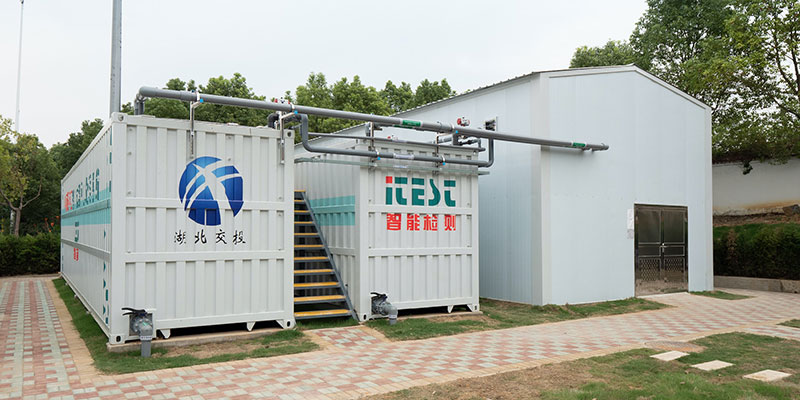
In traditional wastewater treatment, expensive pipelines are used to pump sewage to central treatment plants. Distributed treatment is well illustrated by this series of Chinese highway service areas: Each of the service areas, 50 km apart, has its own modular Aspiral™ wastewater treatment plant.
Distributed treatment means placing plants at the point of need instead of tying into a central facility
For more than a century, utilities have been building large-scale, centralized wastewater treatment plants. These plants come along with costly, large-diameter sewer mains and high-capacity pumps that move sewage to the plants, which are often situated outside of urban areas.
This model has persisted largely unchanged, even as the energy and telecommunications industries have evolved.
A new wastewater treatment model has recently emerged: the distributed treatment model. In the distributed treatment model, multiple, smaller treatment units are placed closer to the point of need. This offers many benefits, including:
- No need for large-scale collection systems
- Reduced energy requirements
- Scalability
- Reduced environmental impact and risks
- Ability to easily reuse treated water locally
- Significant savings on initial capital investment
- Reduced maintenance and operational costs
Using remote control, the systems can be monitored together across locations.
Decentralized Treatment
In computer networking and other fields, “decentralized” is a subset of “distributed.” In water and wastewater treatment, these terms are often used interchangeably, but there is a key distinction.
Decentralized treatment is characterized by independent, small- or medium-scale treatment plants placed next to a source of water or wastewater. Decentralization offers physical and managerial autonomy to local entities.
While distributed treatment systems share the same scaling and siting characteristics — and often the same modular, containerized technologies — as decentralized systems, the difference is that distributed systems are physically or managerially linked to a larger system.
Centrally Controlled Modular Plants
Distributed wastewater treatment is particularly valuable where treatment plants are far enough apart to make pipe runs between them impractical. For example, in one Fluence distributed wastewater treatment project in central China, service areas are placed at 50 km intervals along the Hubei highway system. Each service area is served by individual Fluence Aspiral™ wastewater treatment units that are physically autonomous yet managed centrally by local partner ITEST.
The project features automated Fluence Aspiral™ 20-foot S1 and 40-foot L4 containerized plants, which are based on membrane aerated biofilm reactor (MABR) technology. MABR converts wastewater from the service areas into high-quality, environmentally beneficial effluent that meets China’s strict Class 1A wastewater discharge standard. Performance of the modular Aspiral™ plants can be continuously monitored via smartphone or tablet, or in a central control center that can dispatch maintenance personnel when needed.
Through this distributed treatment approach, the highway system retains the unity and control of large-scale treatment plants, but without the need for outmoded, expensive infrastructure.
Contact Fluence to learn how distributed treatment can address your wastewater challenges.
